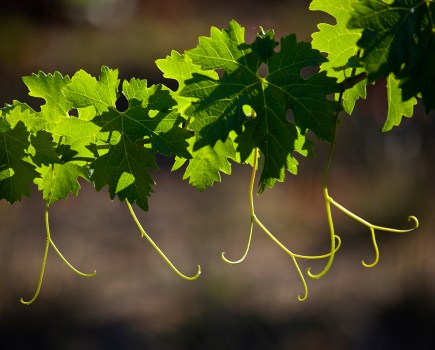The warm spring and hot summer has favoured a new pest to UK vineyards, which growers need to be vigilant for as harvest approaches. Hutchinsons agronomist Will Robinson explains more.
Warm, sunny conditions through spring and the first half of summer have led to a very early season so far, with flowering over in a few days, and many vines one to two weeks ahead of normal, at the time of writing.
The brown marmorated stink bug (BMSB) is an invasive pest native to Asia that was first recorded in the UK in 2018 and could be on the rise this season.
Last year marked a significant milestone for the pest, as juveniles were found for the first time; fruit damage is typically caused by the second generation of the pest, and seasonal temperatures in the UK have not previously been sufficient for BMSB to complete two generations, but with warmer winters and hotter summers – such as we experienced this year – there is a risk of increased populations and second generations of BMSB could be present by September.
Indeed, the pest was sighted in some parts of the south east in July, prompting some large orchard growers to begin precision monitoring to assess and manage any risks to crops.
Adults are prolific fliers, but it is believed the main entry route into the country is from BMSB “hitch-hiking” on imported goods, caravans, motorhomes and other vehicles coming into the country.
How does it affect grapes?
BMSB can cause issues in vineyards in two main ways. The first is the fact that they are sap feeders, so when the adult’s mouthpart pierces the skin of ripening grapes to feed, this creates a potential infection point for Botrytis and sour rot to develop.
Second is the issue that gives BMSB its name; the odour. When the bug is stressed, it releases a pungent coriander-like odour as a defence mechanism, and this is also released when the bug dies or is crushed, as may occur if it gets into the wine press amongst bunches. It is believed that one bug could taint 2.5kg of grapes, and it is a flavour that is impossible to remove.
Vigilance in the run-up to harvest is therefore essential, as is strict hygiene in and around the vineyard, storage areas, sorting tables, etc, once picking gets underway.
If you think you have BMSB, take a photograph and report it to NIAB (BMSB@niab.com), which is monitoring BMSB as part of a DEFRA funded project. BMSB is easily confused with several similar looking native species, so it is best to check.
Species-specific pheromone traps are available to help assess adult stink bug activity and should be placed at head height on the end of rows as stink bugs fly fairly high above the ground.
Limited control options
Generally, there are very few chemical controls available for BMSB, although pyrethroids may have some effect on the juvenile population if applied once eggs have just hatched, and there may be some indirect control of juveniles from treatments applied for Spotted Wing Drosophila (SWD).
However, research suggests the adult population in countries that have experienced the pest for a number of years may be showing resistance to pyrethroids.
Some countries in Europe (e.g. Italy, Switzerland) and elsewhere, including New Zealand, have allowed the release of a parasitic wasp, Trissolcus japonicus (also known as the Samurai Wasp), as a biological control agent for BMSB. By parasitising the eggs, it can reduce the population by 30%, although T. japonicus is non-native, so is not currently allowed in the UK.
Research is ongoing to see if there are any native predatory or parasitic insects in the UK that will help control BMSB at the egg or adult stage. Generalist predators, such as earwigs and spiders, will offer some control, but are not specific enough to prevent economic damage.
Given the comparative lack of control options, some growers may have to consider protecting vines with insect-excluding netting in future if the risk continues to increase.
Identifying BMSB
- Adults are 12-17mm long, similar in appearance to some native UK shield bugs
- Brownish colour with extensive cream and black mottling, and banding along edge of abdomen
- Lighter bands on the antennae and darker bands on the membranous, overlapping part at the
rear of the wings, distinguish BMSB from other species - Underside is pale with very few (if any) markings
- BMSB has a distinctly rectangular head
- See also https://planthealthportal.defra.gov.uk/assets/factsheets/Halyomorpha_halys_Defra_Pest_Factsheet_FINAL_2024.pdf




